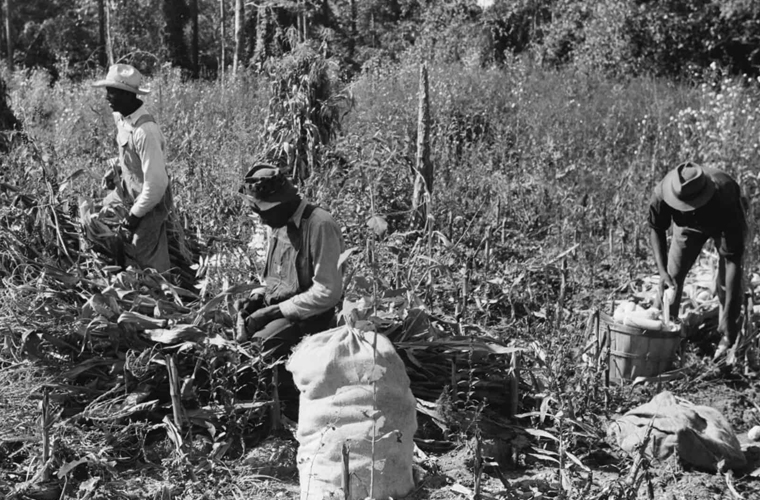Sharecropping is a historical agricultural system that emerged in the United States after the Civil War, particularly in the Southern states. It was a method of farming in which landowners allowed tenant farmers to use their land in exchange for a share of the crops grown on the land. This system was prevalent in the late 19th and early 20th centuries, especially in the cotton-growing regions of the South.
The sharecropping system arose as a result of the economic and social upheaval caused by the end of slavery and the Reconstruction era. With the emancipation of slaves, many former plantation owners found themselves without a labor force to work their land. At the same time, newly freed African American individuals and poor white farmers faced significant barriers to land ownership and economic independence. In this context, sharecropping emerged as a way for landowners to maintain agricultural production while providing an opportunity for laborers, particularly African Americans, to work the land and earn a living. However, the system was fraught with challenges and inequalities that perpetuated poverty and dependence for many sharecroppers.
Under the sharecropping arrangement, the landowner would provide the land, seeds, and tools to the tenant farmer, who would then cultivate the land and grow crops. At harvest time, the resulting crop would be divided between the landowner and the tenant, with the tenant typically receiving a predetermined share of the crop, often around half. The landowner would then sell the harvested crop and deduct any expenses incurred, such as seed and tools, before providing the tenant with their share of the profits.
While sharecropping offered an opportunity for individuals to work the land and earn a living, it also perpetuated a cycle of debt and dependency. Many sharecroppers lacked access to resources and faced high-interest rates on loans for seed and supplies, which often left them in perpetual debt to the landowner. Additionally, fluctuating crop prices and unpredictable weather conditions could further exacerbate the financial instability of sharecroppers, making it difficult for them to break free from poverty.
Furthermore, sharecropping often resulted in unequal power dynamics, with landowners holding significant control over the terms of the arrangement. Landowners could dictate which crops were grown, set prices for supplies, and exert influence over the marketing and sale of harvested crops, leaving tenants vulnerable to exploitation and manipulation. The sharecropping system also had profound social implications, particularly for African American individuals in the South. Many former slaves and their descendants found themselves locked into a cycle of poverty and limited economic mobility as a result of sharecropping. The lack of access to education, discriminatory lending practices, and systemic racism further entrenched the inequalities inherent in the sharecropping system.
Over time, changes in agricultural practices, mechanization, and shifts in labor dynamics led to the decline of sharecropping as a dominant agricultural system. The emergence of industrial agriculture and the Great Migration, during which many African Americans moved to urban centers in search of better opportunities, contributed to the waning prevalence of sharecropping in the mid-20th century. While sharecropping is no longer a widespread practice in the United States, its legacy continues to shape discussions around land ownership, economic justice, and racial inequality. The system’s impact on generations of individuals who were bound by its constraints underscores the enduring significance of understanding its historical context and implications.
In conclusion, sharecropping was a complex agricultural system that emerged in the aftermath of slavery and Reconstruction in the United States. While it provided a means of livelihood for many individuals, particularly in the South, it also perpetuated cycles of poverty, debt, and unequal power dynamics. Understanding the historical legacy of sharecropping is essential for grappling with ongoing conversations about economic justice and racial equity in America.


